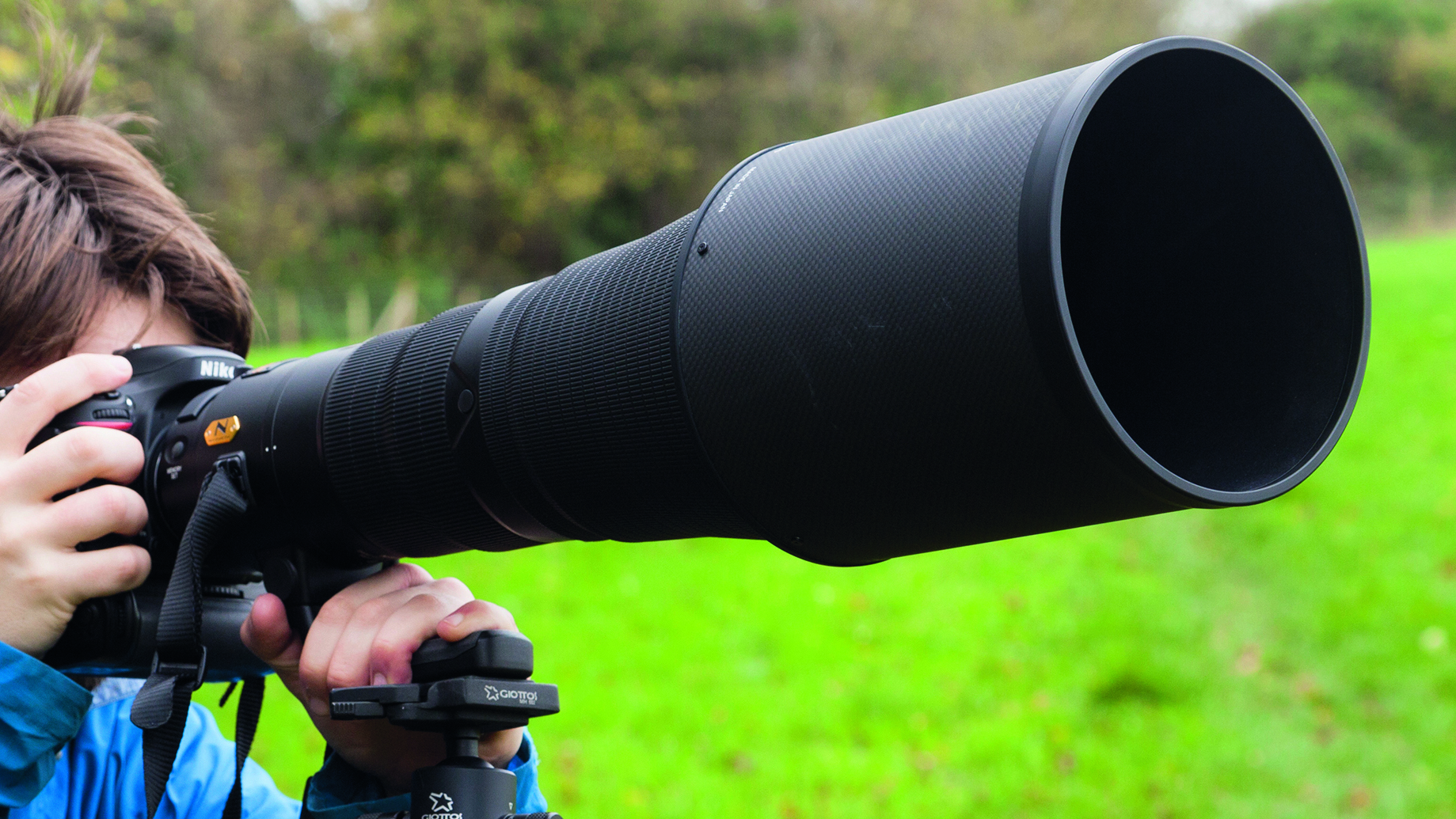Best binoculars

How to find the best binoculars? It's a trickier issue than you might think, with lots of different factors to consider when you're in the market for a new pair of binoculars. To make it a little easier, you can boil your search down to two crucial considerations: what's your budget, and what do you want to use them for?
Whether you're looking for the best binoculars for bird watching, nature or wildlife spotting – particularly if you’re going on safari – or astronomy, sport and entertainment, we've got you covered in this guide. (Do note that for some uses, you may be better for going for a bigger-magnification spotting scope, or a more portable monocular.)
There are a few technical details and terms worth acquainting yourself with. As you may already know, binoculars are classified by a couple of numbers: firstly their magnification, followed by the (objective) lens size. For example: 10x30. If you’re looking for general-purpose travel binoculars for hand-held use, then a model with up to a 8x or 10x magnification should be fine. Go for a higher magnification and any handshake will be magnified too, making for a shaky image – unless there is the ability to mount them onto a tripod, or they have built-in image stabilization.
As for lens size, bigger is better in terms of the amount of light that’s let in. But portability is also important – compact and lightweight binoculars have smaller lenses, so this aspect is always a trade-off. However, if you’ll mainly be using your binoculars in the daytime, then having a bigger lens isn’t crucial.
Further qualities to look for include the build of the binoculars, including not just the material they’re constructed from in terms of providing robustness, but also whether they offer long eye relief for extra comfort.
We’d also suggest you investigate whether they offer the likes of waterproof or antifogging features – particularly useful in the British climate. The caveat is that the more features, the better the optics and the better the build quality, the more they’re likely to cost, of course.
With all this in mind, we’ve some recommendations here to help you choose the best binoculars for your particular requirements.
Nikon Monarch HG 10x30
Specifications
Reasons to buy
One of the newest premium binoculars on the market comes from Nikon in either 8x30 or – as we’ve selected for our top pick – 10x30 options. The Nikon Monarch HG 10x30 binoculars are not only compact and relatively portable at 450g, the magnesium alloy build has the benefit of being water and fog proofed too. The idea is that these ape the performance of Nikon’s Monarch HG 42mm diameter version, but in a smaller body. Use of extra low dispersion (ED) glass corrects chromatic aberration that can cause color fringing, while comfort is provided via a soft-to-the-touch neck strap. Both Nikon’s 10x and 8x options are supplied with a semi hard-type case for protection when transporting. A tripod adaptor for each is an optional extra. If you’re looking for the best compact binoculars, this pair from the camera stalwart takes the crown.
Celestron Outland X 10x50
Specifications
Reasons to buy
Something of a bargain, this pair of Celestron BaK-4 prism binos boasts 10x magnification and multi coated optics to prevent anything from marring your view. Suitable for outdoor use by birders and wildlife watchers, thanks not only to said magnification but also a sturdy polycarbonate build and waterproofing, the large 50mm objective lenses on offer aid the product’s light gathering abilities, making them suitable for use in low light as well as regular daylight. Semi-attached lens caps provide both convenience and protection, while a large smooth-feel focus wheel aids operation and a long 17.4mm eye relief delivers comfort. Capable of being tripod mounted if desired, a strap, lens cloth and carry case comes as standard, while a limited lifetime warranty may well help seal the deal for the budget conscious.
Celestron SkyMaster Pro 20x80
Specifications
Reasons to buy
To shoot for the stars, you obviously need a pair of binoculars with a high magnification factor – as well as ones with excellent light gathering abilities. We get both here with the splendidly named ‘SkyMaster’, ensuring this affordable pair is tailor-made for amateur astronomers, allowing for use at dusk, dawn and night. Multi coated lenses combine with BaK-4 prisms to allow for increased light transmission and therefore high contrast images with bags of detail. Stargazers will also benefit from the fact that this option can be tripod mounted, while it also has its own center support rod for increased stability. A polycarbonate and aluminum build provides both robustness and portability, while we also get a product that is waterproofed and fog-proofed with it. To conclude, here is a binocular that could literally stand in a field of its own, while your attention is inevitably drawn skyward.
Canon 10x42L IS WP
Specifications
Reasons to buy
All of Canon’s current range of binoculars have the ‘IS’ suffix in their model name to denote the fact they’re image stabilized. This battery-operated option enables you to get a wobble-free image by just pressing in a button on the binoculars. From the broad range of Canon IS options available, we've picked the rubber coated Canon 10x42L IS WP model as the best, because – as the name suggests – they’re additionally waterproof, so ideal for an even broader range of long-distance pursuits. Also, Canon’s ‘L’ series is its premium line up, providing a super steady view in the most adverse of conditions. As well as rock-solid stability, these porro prism binoculars sit comfortably in your hand and sport a comfortably long (at 16mm) eye relief, plus a large 4.2mm exit pupil for a bright field of view. They also offer the closest focusing distance that’s closer than most, at just 2.5 meters. Steady as she goes.
Leica Trinovid-HD 10x42
Specifications
Reasons to buy
Fashioned to survive almost anything, the Leica Trinovid-HD 10x42 binos get our vote for the best binoculars for bird watching right now. And they’re not just good for ‘birders’: in truth, they’re a solid all-round option as well. If you’re looking for a combination of state-of-the-art image performance and a ruggedness that will withstand whatever the outdoors may throw at you, then we recommend Leica’s impact-resistant Trinovid-HD 42 range. Their ergonomic design and steady grip allows for accurate and precise focusing, delivering both razor sharp close-ups of our feathered friends, plus long distance clarity. The performance stays consistent too, whether you’re viewing subjects at first light or at dusk. Good contrast and color fidelity are key for bird watchers and these binoculars offer that in spades, as well as several choices of model, from 8x32 to the 10x42 we’ve selected.
Olympus 10x42 PRO
Specifications
Reasons to buy
This bright, sharp and reliable model from the Olympus pro line up (a new 8x42 version is also available) features nano coating for the first time in the range. Olympus is renowned for its optical expertise, so it’s no surprise that we get the same high performance Zuiko optics that it deploys with its camera systems. Indeed, the claim here is the binos’ optics offer unprecedented light transmittance for their class.
Compact, ergonomically designed and of rugged construction that prevents any ingress from water if submerged at a depth of one meter for five minutes, close up performance is also impressive, with the ability to view subjects as near as 1.5m. Nitrogen filling prevents fogging while the design is slim and simple. An extendable eye relief provides comfort for spectacle wearers, as do a dioptric adjustment ring, flip down lens cap and a new strap mount. A 15-year warranty provides extra peace of mind.
Opticron Savanna WP 6x30
Specifications
Reasons to buy
Costing just over £100, the Opticron Savanna WP 6x30 binoculars are portable, waterproof and contemporary-looking porro prism binoculars, and they’re as suited to youngsters as they are adults. In fact, this range – Savanna, rather than Savannah – is said to be usable by children aged 7+ without fear of eyestrain. As well as being compact enough for little hands, they’re relatively lightweight too, at a little under 500g, while offering a relatively wide field of view for curious eyes and minds. OK, so a 6x magnification doesn’t make them the most powerful pair of binos on the block, but you can upgrade to the 8x30 model – weighing just a few grams more – for another £10 if so desired, which represents something of a bargain in itself.
Steiner 2212 10x 26mm Safari UltraSharp Binocular
Specifications
Reasons to buy
While the 10x magnification factor of the Steiner 2212 10x26mm Safari UltraSharp Binoculars is certainly impressive, what also grabs your attention is how light they are, weighing just 297g. Handling is also excellent, with an ergonomic grip and intelligently laid-out controls, and optical quality is near top of the range. They're not quite at the level of, say, the Canon or Zeiss (see below) binoculars, but at this price they're really nothing to sneeze at. Made with high-contrast optics that deliver an image of exceptional quality, these binoculars represent some of the best value for money on this list.
Zeiss Victory SF 10x42
Specifications
Reasons to buy
Zeiss is, of course, synonymous with cutting-edge optical performance, which is what you’ll be buying a pair of binos for in the first place. If you’re looking to luxuriously spend into the thousands to obtain the very best binoculars possible, then check out the Victory line up – said to be the best that Zeiss has to offer. Suitable for pretty much every pursuit, especially the watching of wildlife, the 10x magnification of our pick, the Zeiss Victory SF 10x42, not only brings the faraway up close, but the optical performance has a crystal clarity thanks in part to a seven-lens eyepiece. This particular model is also the most versatile, as well as the most premium, with an evenly balanced weight distribution and ergonomic grip making hand-holding the binos for a prolonged period a pleasure. Zeiss also claims that a large exit pupil measuring over 5mm reveals the details in dark shadows or dim dusk.
Get the Digital Camera World Newsletter
The best camera deals, reviews, product advice, and unmissable photography news, direct to your inbox!
Gavin has over 30 years’ experience of writing about photography and television. He is currently the editor of British Photographic Industry News, and previously served as editor of Which Digital Camera and deputy editor of Total Digital Photography.
He has also written for a wide range of publications including T3, BBC Focus, Empire, NME, Radio Times, MacWorld, Computer Active, What Digital Camera and the Rough Guide books.
With his wealth of knowledge, Gavin is well placed to recognize great camera deals and recommend the best products in Digital Camera World’s buying guides. He also writes on a number of specialist subjects including binoculars and monoculars, spotting scopes, microscopes, trail cameras, action cameras, body cameras, filters and cameras straps.

